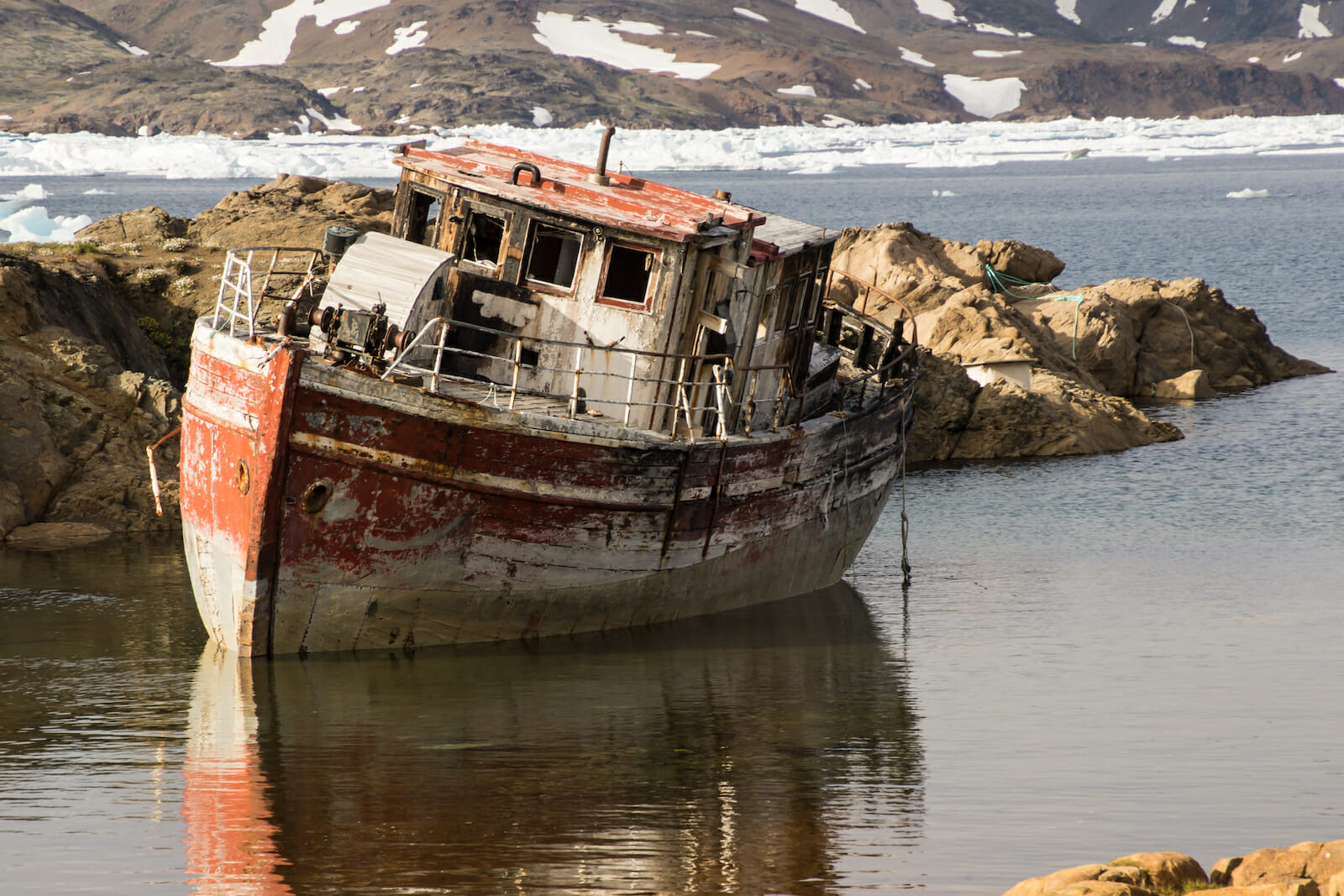
Trump’s Icebox
“I have heretofore expressed the opinion that we should purchase Iceland and Greenland, but especially the latter. The reasons are political and commercial.”
This excerpt is from a report the U.S. Government conducted on the potential purchase of Greenland.
The date of the report, however, is not 2019—it’s 1868. After purchasing Alaska from the Russians for a bargain ($7.2 million at the time or $135 million in 2019), U.S. Secretary of State William Seward asked former Kansas Governor and Treasury Secretary Robert J. Walker to investigate the feasibility of purchasing Greenland as well as Iceland. Walker, as evidenced in the excerpts above, unhesitatingly supported such a purchase.
Walker’s report marked the beginning of America’s extended interest in purchasing the world’s largest island. On August 16, the Wall Street Journal reported that Trump had expressed interest in the U.S. buying Greenland for “its abundant resources and geopolitical importance.” The Danes and Greenlanders responded incredulously. Steve Sandgreen, secretary to Greenlandic Premier Kim Kielsen wrote, “Of course, Greenland is not for sale.” Danish Prime Minister Mette Frederiksen added, “Greenland is not for sale. Greenland is not Danish. Greenland belongs to Greenland.” Trump’s political opponents at home also ridiculed the deal. While certainly random, Trump’s idea is not unprecedented.
American presidents have a history of purchasing foreign territory and incorporating it into the U.S.—and, in almost every instance, they were castigated for the decision. Thomas Jefferson nearly provoked a constitutional crisis when he purchased the Louisiana Territory from Napoleon at three cents an acre. After receiving Napoleon’s offer, even Jefferson believed that he lacked the executive power under the U.S. Constitution to purchase territory from a foreign power, despite his own desire to acquire the Louisiana Territory. Jefferson sent a proposed constitutional amendment to Congress, but with his close aides recognizing the amendment process would take too long, they refuted unconstitutional allegations from northern senators and passed the purchase as a treaty in the Senate on a vote of 24 to 7.
More than 60 years later, on March 30, 1867, Seward and Russian diplomat Baron Edouard de Stoeckl signed the Treaty of Cession which transferred Alaska from Russian to American ownership. While the Russians no longer saw Alaska as a valuable asset, after decimating its sea otter population, American diplomats and commercial leaders “foresaw a potential for gold, fur, and fisheries, as well as more trade with China and Japan.” Geopolitically, the Alaska purchase solidified the U.S. as a Pacific power and prevented other superpowers from encroaching on America’s borders and hemisphere. In hindsight, the purchase was a stroke of brilliance.

Besides gaining millions of acres of beautiful wilderness, Alaska has yielded “billions of dollars in whale oil, fur, copper, gold, timber, fish, platinum, zinc, lead, and petroleum” as well as untapped oil reserves. The state also serves as an integral element in America’s defenses with strategic airbases in Fairbanks and Anchorage. Yet, at the time of the Alaskan purchase, Seward and President Johnson were ridiculed. While some newspapers foresaw the commercial and geopolitical benefits, editorials lamented that taxpayer dollars had been wasted on a “polar bear garden.” Johnson’s political opponents (and there were many) called the purchase “Johnson’s Polar Bear Farm” and “Seward’s Folly” or “Seward’s Icebox.” One columnist in the New York World wrote, “I’ll go for it with an extra condition that the Secretary of State be compelled to live there. Russia has sold us a sucked orange.”
With the successful purchase of Alaska, Seward moved onto Greenland and Iceland. But Seward (and the rest of the Johnson administration) left their posts before such an agreement could be reached.
Less than 80 years later, in 1946, President Truman discretely offered Denmark $100 million in gold in exchange for Greenland. According to National Archives documents that were uncovered by a Copenhagen newspaper in 1990, the idea of purchasing Greenland resurfaced in November 1945, when Maine Senator Owen Brewster said U.S. military authorities supported such a purchase and deemed it “a military necessity” after facing impediments related military logistical operations on the Atlantic during World War II. A meeting of the Joint Chiefs of Staff confirmed that “practically every member…said that our real objective as regards to Greenland should be to acquire it by purchase from Denmark.” Plus, 1946 seemed like a buyer’s market for foreign territory. “The committee indicated that money is plentiful now, that Greenland is completely worthless to Denmark [and] that the control of Greenland is indispensable to the safety of the United States,” a State Department official wrote.
Assistant chief of the State Department’s bureau for northern European affairs followed up on this memo by suggesting that the U.S. offer Denmark $100 million in gold for Greenland since few people lived on the 844,000-square-mile island and it would provide the U.S. with “valuable bases from which to launch an air counteroffensive over the Arctic area in the event of attack.” Finally, on December 14, 1946, U.S. Secretary of State James Byrnes made the offer to Danish Foreign Minister Gustav Rasmussen in New York.
I promise not to do this to Greenland! pic.twitter.com/03DdyVU6HA
— Donald J. Trump (@realDonaldTrump) August 20, 2019
The reasons for America’s interest in Greenland today seem similar to its interest in 1946. The reaction from the Danes is also similar. “Our needs…seemed to come as a shock to Rasmussen,” Byrnes wrote. But the Danish Foreign Minister “said that he would study a memorandum which I gave him.” Nothing came of the agreement.
Nonetheless, the overture may have helped secure what the U.S. really wanted. It did not purchase or incorporate Greenland but the U.S. still signed a defense agreement with Denmark in 1951 that led to the construction of the Thule base, which was originally designated as a refueling base for long-range bombing missiles but evolved into a “ballistic missile early warning site and satellite telemetry station” at the height of the Cold War.
Perhaps a similar turn of events could happen today.
Although Trump canceled his trip to Denmark after the Danes stressed that Greenland was not for sale, it seemed unlikely that the U.S. was ever actually going to purchase Greenland. Even if Congress allocated $1.4 billion for Greenland (the cost of Truman’s proposal adjusted for inflation), H. Jefferson Powell, a former deputy assistant attorney general and professor at Duke University School of Law noted that “Greenland is not a colony of Denmark in the way that a 19th- or early 20th-century colony was a colony of a European country, so I don’t think any Western government would take seriously the idea that it could transfer its sovereignty to another sovereign just because it was expensive.”
Greenland’s officials, however, did say that while the island was not for sale it was “open for business” and improved relations with the U.S. This could be Trump’s opening.
On a strategic level, Greenland could offer increased intelligence capabilities to “conduct satellite operations and…detect possible over-the-North-Pole nuclear missile launches from China and Russia.” Since the Thule base already provides serious logistical capabilities to U.S. operations in the Atlantic and Arctic, an increased U.S. military presence could help defeat Russia’s recent revanchist advances in the Arctic as it looks to secure more resource-rich areas while the U.S. lags behind. By stationing missile or other military forces in Greenland, Russia would be put on notice.
Building stronger relations with Greenland would also help the U.S. counter its primary strategic adversary: China. Recently, the Danish government has “asserted its influence over Greenland to block Chinese investments out of concern for potential Greenlandic dependence on China.” In trying to invest in Greenland, China has already recognized the island’s valuable supply of rare earth metals and hydrocarbons.
A better U.S.-Greenland relationship is also two-sided. Although Greenland’s government has autonomy from Denmark, it still receives $740 million annually in expenditures from Copenhagen. Greenlanders want independence but don’t know how they can afford to sustain their own country when Denmark is its financial lifeline. Increased U.S. military and commercial activity would not only boost Greenland’s tourist revenue but other commercial investments and economic growth.
Mikkel Vedby Rasmussen, former head of the Danish Defense Ministry’s Strategy and Policy Office, said that he does not take Trump’s idea “literally.” Like his campaign pledge of building a wall, Trump does not literally want to buy Greenland, he instead wants to expand America’s influence in order to stop Russian and Chinese activities in the Arctic region.
If that’s the case, building better relations with Greenland won’t mean working with an icebox, but a hotbed of potential commercial and geopolitical activity.

